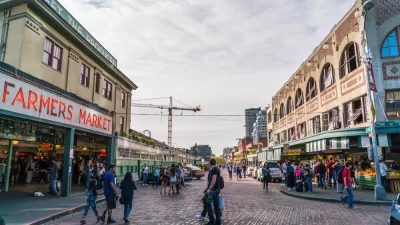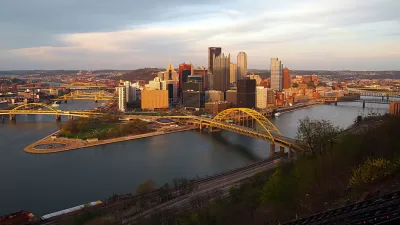Even when they qualify for affordable rents, tenants in high-cost neighborhoods find themselves shut out of essential amenities and services.

Residents who qualify for affordable housing developments are, in some areas, finding the cost of living in their immediate neighborhoods too high. A New York Times article by D.W. Gibson profiles one resident of Southampton, New York, who qualified for an apartment in a development sponsored by the Department of Housing and Urban Development (HUD), but now struggles to afford groceries and other goods locally, such as access to the local beach, which requires a $250 parking permit. “I have to leave here to do my shopping — even the supermarkets are too expensive,” says Liza Coppola. “She says most of the people she knows in the Shinnecock community [where she works] face a similar dynamic of being priced out of the place they live.”
Coppola says she was lucky to snag an apartment in a HUD building, which typically have years-long waiting lists. “Because she’s spent years working on housing issues — first at a nonprofit in Greenport and now with the Shinnecock community — Ms. Coppola knew she would qualify for HUD developments projects intended for people making less than the area median income of $100,722.” But she and others like her find themselves leaving the neighborhood to access affordable services. This dynamic could lead to displacement as residents of increasingly desirable areas find themselves priced out of local amenities, signaling a need for a more comprehensive approach to neighborhood affordability where housing is recognized as one of a number of factors driving displacement.
FULL STORY: The Apartment is Affordable, but the Neighborhood Sure Isn’t

Planetizen Federal Action Tracker
A weekly monitor of how Trump’s orders and actions are impacting planners and planning in America.

Congressman Proposes Bill to Rename DC Metro “Trump Train”
The Make Autorail Great Again Act would withhold federal funding to the system until the Washington Metropolitan Area Transit Authority (WMATA), rebrands as the Washington Metropolitan Authority for Greater Access (WMAGA).

DARTSpace Platform Streamlines Dallas TOD Application Process
The Dallas transit agency hopes a shorter permitting timeline will boost transit-oriented development around rail stations.

San Francisco's School District Spent $105M To Build Affordable Housing for Teachers — And That's Just the Beginning
SFUSD joins a growing list of school districts using their land holdings to address housing affordability challenges faced by their own employees.

Car-Centric LA Suburb Looks to a Train-Oriented Future
City leaders in Rancho Cucamonga, the future western terminus of the Brightline West rail line to Las Vegas, want to reimagine the city as a transit-oriented, pedestrian-friendly community.

New Alaska Bitcoin Mine Would Burn as Much Energy as the State’s Largest Coal Plant
Fueled by “stranded” natural gas, the startup hopes to become the largest in the US, and to make Alaska an industry center.
Urban Design for Planners 1: Software Tools
This six-course series explores essential urban design concepts using open source software and equips planners with the tools they need to participate fully in the urban design process.
Planning for Universal Design
Learn the tools for implementing Universal Design in planning regulations.
Municipality of Princeton
Roanoke Valley-Alleghany Regional Commission
City of Mt Shasta
City of Camden Redevelopment Agency
City of Astoria
Transportation Research & Education Center (TREC) at Portland State University
US High Speed Rail Association
City of Camden Redevelopment Agency
Municipality of Princeton (NJ)





























